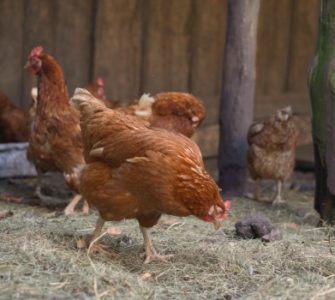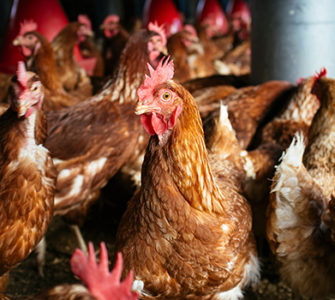Change diets to reduce dust and ammonia in cage-free systems
Reducing protein, adding fiber and feeding supplements to poultry can help producers control ammonia levels inside cage-free housing.
Hongwei Xin, director of the Egg Industry Centre, said making changes to flock diets can help tackle bird health issues caused by air pollution in bird houses, reports WATTAgNet.
The shift to cage-free operations means birds are freer to forage, scratch and dust bathe; however the increase in activity leads to higher levels of pollutants such as ammonia and dust in the air.
To address the problem, producers can adopt a range of measures, ranging from changing bird diets, to investing in technology to filter air.
Speaking at the Egg Industry Centre Issues Forum in Columbus, Ohio, Xin said studies show that reducing dietary protein by 1% while maintaining the nutritional balance of feed can cut ammonia emissions by about 10%.
Adding fiber, such as wheat middling, can reduce emissions from layer manure by as much as 45%, while adding supplements such as 10% distiller’s dried grains with solubles could cut levels by 14%.
Investing in technology
Xin said drying manure can also reduce ammonia levels, and can be achieved by circulating air over the belts, although it is an expensive procedure, he added.
Keeping litter moisture content to below 30% is also important, as wet litter gives off ammonia, creating numerous health issues.
For farmers looking to invest in technology to control ammonia, Xin said fixed electrolyzed water spray is the most effective on a cost basis, reducing levels by 50% for the cost of 10 cents per bird per year.
For exhaust pollution mitigation, an electrostatic precipitator — which works by attracting dust to the surface of the device — is the cheapest option, whilst also cutting exhaust by as much as half.
Other options include planting trees, shrubs and bushes around a house to provide a buffer, however they fail to deal with smells, Xin said.
Wet scrubbers — which clean by forcing air through a solution — can reduce dust and ammonia emissions by 40% and 80% respectively, but their costs makes them prohibitive to the majority of producers, he added.
Posted on July 7, 2017

















